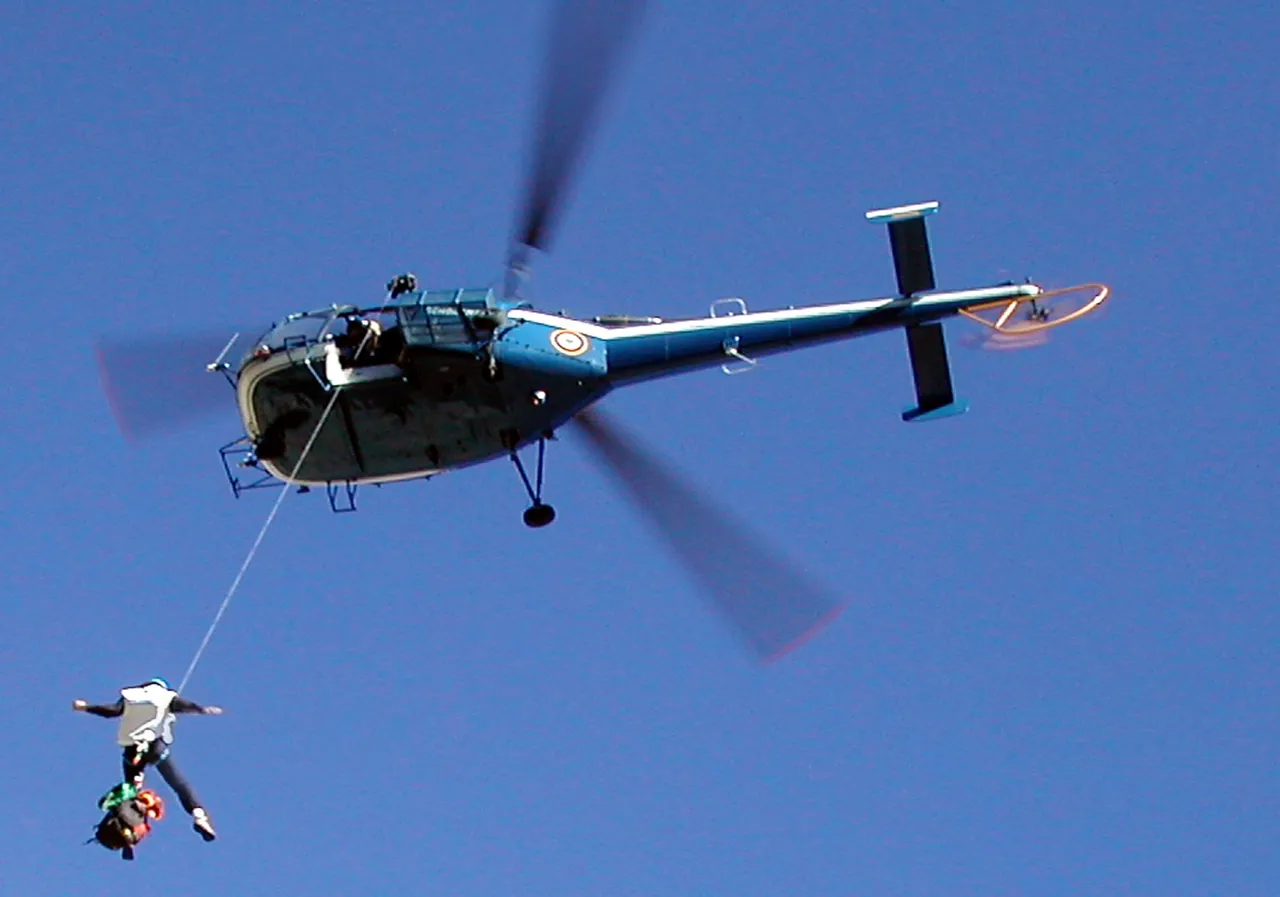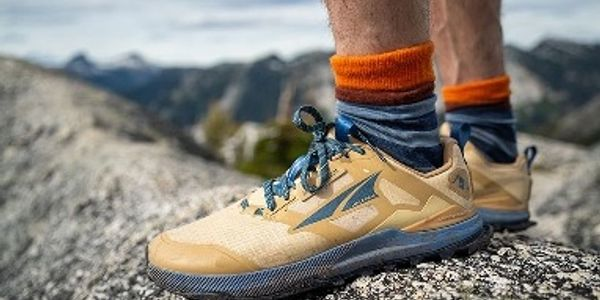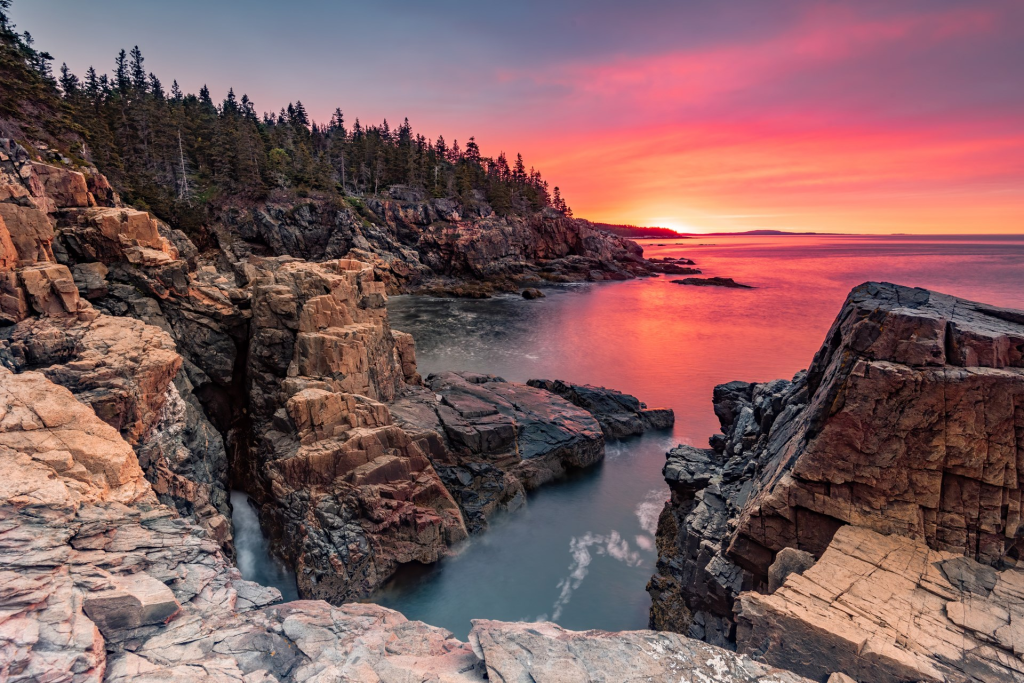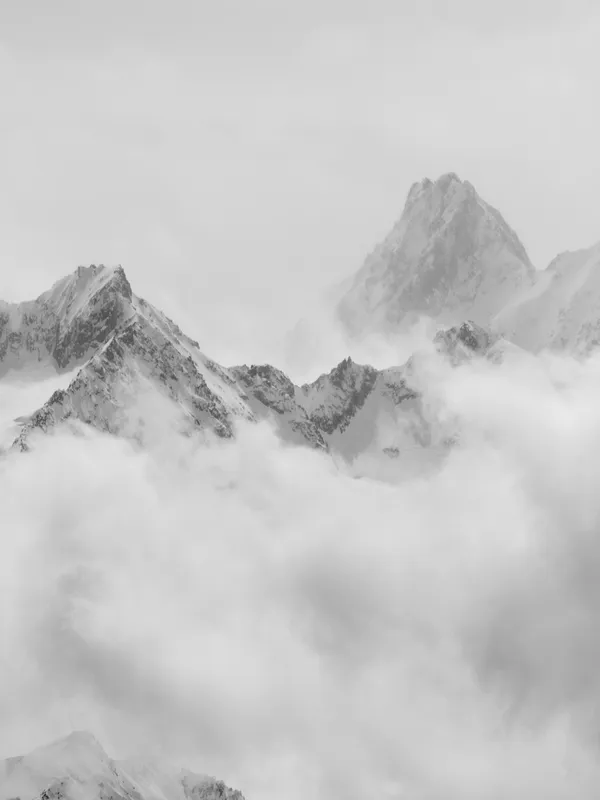From Social Media Stunts to Search and Rescue Bills
By Cap Puckhaber, Reno, Nevada
I’m Cap Puckhaber, and I’ve been hiking for over twenty years. As a marketing professional and blogger based in Reno, Nevada, I spend a huge amount of my free time on the trails around Tahoe and the Sierra. I’ve always seen hiking as an escape, a way to connect with nature. But I have to be honest, I’ve seen a shift in the culture out on the trail, and it’s deeply concerning. It feels like the focus for some has moved from the experience to the “performance” of the experience, and the consequences are starting to pile up.
We’re seeing a surge in stories about reckless behavior, environmental damage, and avoidable search and rescue missions. This isn’T just a few isolated incidents. It’s a pattern. This has led to some pretty intense debates, like the one in New Hampshire about charging hikers for their own rescues. It’s a contentious topic, but it’s one we absolutely need to discuss. In this post, I’m going to break down this trend of irresponsibility, from the chase for social media fame to the real-world costs that everyone, including taxpayers and emergency responders, has to bear.
The “Selfie-Seeker” Effect: When Social Media Turns Trails Dangerous
It’s impossible to ignore the massive impact social media has had on the outdoors. On one hand, it inspires people to get outside, which I generally think is a good thing. On the other hand, it has created a culture of “clout-chasing” that puts hikers and the environment at risk. The pursuit of the perfect, jaw-dropping photo or video clip has pushed some individuals to make appallingly bad decisions. We’ve all seen the videos and images, and frankly, they’re often more cringeworthy than impressive.
This isn’t just about someone stepping over a rope for a better angle. It’s about a fundamental disrespect for the environment and for personal safety. This behavior is driven by an appetite for “likes” and “follows,” and it’s warping the very idea of what it means to be an outdoor enthusiast.
Chasing the ‘Perfect Shot’ at Nature’s Expense
A few stories from recent years really stick with me. One of the most blatant examples was the social media hiker who literally cut down a tree in the Pacific Northwest just to get an unobstructed view for their photo. The backlash from the community was immediate and severe, as it should have been. This person’s desire for a fleeting, “perfect” image on their feed led to the permanent destruction of a part of the ecosystem. It’s a prime example of how self-promotion can completely overshadow the core principles of conservation.
This same mindset fuels the “extreme hiking” trend. We see people livestreaming themselves scrambling over exposed cliffs or attempting perilous routes without any proper gear, experience, or preparation. They are performing for an online audience, and in doing so, they not only risk their own lives but also set a terrible example for thousands of followers. When one of these stunts goes wrong, it’s not just a personal tragedy. It becomes a resource-draining emergency mission that puts rescue volunteers in harm’s way.
A Personal Take: What I See Near Reno
Living in Reno, I’m just a short drive from Lake Tahoe, and I see versions of this behavior all the time. I’ll be on a trail and watch groups teetering on the edge of a granite overlook, far from the marked path, all for a selfie that makes them look “adventurous.” They don’t see the loose gravel or the thousand-foot drop. They just see the camera lens.
This behavior isn’t limited to stunts. I’ve seen people approach wildlife, fly drones in protected wilderness areas (which is often illegal), or leave behind colorful props they brought for their photoshoot. It’s a strange, narcissistic approach to nature, as if the landscape is just a backdrop for their personal brand. It demonstrates a complete lack of understanding about our role as visitors in these wild spaces. We are guests, and we should act like it.
The Everest Example: Fame Over Safety
You can see this trend reach its tragic conclusion in the high-stakes world of mountaineering. On peaks like Mount Everest, the pursuit of fame has become a deadly serious issue. There was a heartbreaking incident where a climber, who had built a large social media following for “extreme” adventures, reportedly disregarded safety protocols and expert advice to attempt a risky solo summit. The climber tragically lost their life.
After the grief came the anger. Critics in the climbing community pointed out that this wasn’t just an accident. It was the predictable outcome of a culture that rewards extreme risk-taking for the sake of followers. When the validation you get from strangers online becomes more important than the sanctity of your own life and the judgment of experienced guides, you’ve crossed a dangerous line. Everest is becoming a platform for people to take wild chances, and it’s leading to more fatalities. It’s the same root problem as cutting down a tree for a photo, just with the ultimate consequences.
The High Cost of a “Simple” Mistake
When these poor decisions, whether for a selfie or due to simple negligence, inevitably go wrong, someone has to step in. That someone is usually a highly-trained, often volunteer, Search and Rescue (SAR) team. This brings us to the financial and logistical side of the problem. These rescue missions are not simple, and they are certainly not free. They require helicopters, specialized gear, and dozens of personnel, putting a massive strain on state and local resources.
This has all culminated in a controversial proposal in New Hampshire, a state with some of the most beautiful and treacherous hiking in the country. The core of the issue is this: if a hiker’s own negligence leads to a rescue, should they be the one to foot the bill? It’s a debate that’s now happening in hiking communities across the nation.
What’s Happening on Franconia Ridge?
Franconia Ridge in New Hampshire is a perfect case study. It’s one of the state’s most popular and stunning hikes, but it’s also notoriously dangerous. The terrain is rugged, and the weather is famously unpredictable, capable of changing from sunny to lethal in a matter of minutes. In recent years, SAR teams have seen a worrying increase in rescue missions on the ridge.
The problem, according to officials, is a growing number of visitors who arrive without understanding the risks. They hike the trail unprepared, lacking the proper gear, water, or knowledge of the conditions. They get into distress, and a rescue is launched. This spike in rescues has put a huge financial burden on state resources, particularly the New Hampshire Fish and Game Department, which oversees SAR operations.
The Big Debate: Should Hikers Pay for Rescue?
In response, New Hampshire officials have recommended that hikers who require rescue, particularly those deemed negligent, should be financially responsible for the operation. The proposal suggests hikers could be charged the full cost, which can easily run into thousands or even tens of thousands of dollars. This would cover everything from the manpower to the helicopter time and equipment used.
The idea is twofold. First, it would help offset the immense costs and ensure resources are available for future rescues. Second, and perhaps more importantly, officials hope the potential for a massive bill will serve as a powerful incentive. It might make someone think twice before heading up the mountain in jeans and sneakers with only a single bottle of water. The New Hampshire Fish and Game Department has long advocated for hiker responsibility, and this proposal is the next logical, if severe, step. Their “Hike Safe” card program is one attempt to fund these efforts through voluntary contributions, but the debate now is whether to make the negligent pay directly.
My View on the “Hiker Tax”
As a hiker, my feelings on this are mixed. I believe that true accidents happen. A sudden, unexpected medical emergency or a freak rockslide shouldn’t bankrupt a person. Charging someone in that scenario feels wrong. It could even, as some critics argue, cause people to delay calling for help in a life-threatening situation, leading to even worse outcomes.
However, we need to draw a line between an accident and pure negligence. If you hike into a desert canyon during a drought, ignoring explicit warnings about water scarcity, and then need a helicopter extraction for dehydration, is that an “accident”? If you attempt a notoriously difficult peak in a winter storm with no ice axe or crampons, is that an “accident”? I don’t think so. I believe there is a place for personal accountability. Perhaps the funds collected could be funneled directly back into trail maintenance and education, as some have suggested. It’s a complex issue, but ignoring the financial strain that reckless behavior places on our emergency services is no longer an option.
It’s Not Just Stunts, It’s a Lack of Basic Prep
While the social media daredevils get a lot of attention, a more common problem is the simple, avoidable failure to prepare. This is arguably more frustrating because it’s so easy to prevent. It’s the “it’s just a day hike” mentality that gets people into serious trouble. They underestimate the trail, the weather, and their own physical needs, leading to situations that are 100% avoidable.
This lack of preparation is a different kind of irresponsibility, but it stems from a similar place: a failure to respect the power of the natural world. It’s the assumption that because a trail is popular or close to a city, it must be safe. That is a dangerous, and often false, assumption.
Ignoring the Obvious: The Desert Dehydration Dilemma
A classic example of this is the desert hiker. We’ve all heard the stories, especially from the Southwest. A group of hikers ventures into a desert region during a severe drought, despite numerous advisories and warnings about extreme heat and a lack of water sources. They don’t carry nearly enough water for the conditions.
Predictably, they succumb to dehydration and heatstroke, requiring an emergency rescue. This is not just a personal failure. It diverts critical emergency services. It also highlights the growing strain that climate change is placing on our wild areas. Deserts are becoming hotter and drier, and margin for error is shrinking to zero. Ignoring these shifting environmental conditions isn’t just careless. It’s a willful disregard for reality.
What “Be Prepared” Actually Means
The old motto “Be Prepared” is more than just a quaint saying. It’s the most important rule of the outdoors. So what does it actually mean? It means doing your research, checking the weather forecast not just for the trailhead, but for the summit. It means understanding the trail’s difficulty, elevation gain, and water sources before you leave your house.
Most importantly, it means carrying the “Ten Essentials.” This isn’t a suggestion. It’s a proven system for survival. If you’re not familiar with them, resources like REI’s “The Ten Essentials” guide are a fantastic place to start. It includes navigation (a map and compass, not just your phone), a headlamp, sun protection, a first-aid kit, a knife, fire-starting materials, an emergency shelter, and extra food, water, and clothes. I’ve seen sites like Backpacker.com drive this point home for years. Having these items can turn a potential disaster into a mere inconvenience.
A Common Mistake: Underestimating Local Trails
Here’s the “don’t” example I see all the time near Reno. People look at Mount Rose. It’s right off the highway, you can drive most of the way up, and it’s an incredibly popular trail. Because it’s so accessible, people treat it like a walk in the park. They “don’t” check the weather, so they’re surprised by 50 mph winds at the ridge.
The biggest mistake is underestimating snow. Even in late spring, there can be deep, lingering snowfields. I’ve watched people in running shoes and shorts try to cross them. They post-hole, get soaked, and risk hypothermia, all because they assumed “local” and “popular” meant “easy.” They didn’t respect the mountain, and that’s when the mountain becomes dangerous. No trail is “easy” if you are unprepared.
When Recreation Damages the Resource
The final piece of this irresponsibility puzzle is the direct physical impact on the environment. This isn’t just about leaving a candy wrapper behind. It’s about behavior that causes significant, lasting damage to the ecosystems we claim to love. This damage is often done in the name of recreation, which is a bitter irony.
When we hike, we are visitors in a fragile system. Our actions, even seemingly small ones, have consequences. When those actions are multiplied by thousands or millions of visitors, they can destroy the very beauty we came to see.
Illegal Trail Running and Ecosystem Damage
One trend that has sparked a lot of conversation is illegal off-trail running in protected areas like national parks. In pursuit of a faster time, a personal record to post online, or just a different route, some runners have been caught trampling delicate ecosystems. They cut switchbacks, which is a major cause of trail erosion.
This practice can destroy alpine tundra, which takes decades to recover, and disrupt sensitive wildlife habitats. The offenders who are caught are rightly issued hefty fines. Their actions sparked a necessary conversation about the balance between recreation and conservation. The laws and regulations in our parks exist for a reason. They are there to protect the landscape for everyone, and ignoring them for a personal athletic goal is the height of selfishness.
The “Leave No Trace” Philosophy Isn’t a Suggestion
All of these issues, from cutting trees to trampling tundra, tie back to one central philosophy: Leave No Trace. Many people think this just means “pack out your trash,” which is a critical part, but it’s so much more. The Leave No Trace Center for Outdoor Ethics outlines seven core principles that are essential for all of us.
These principles include “Travel and Camp on Durable Surfaces.” This means staying on the marked trail, not cutting switchbacks. It includes “Respect Wildlife,” which means not feeding the squirrels or getting too close for a photo. It also includes “Be Considerate of Other Visitors.” This is a big one that covers everything from not playing loud music to yielding on the trail. Following these principles isn’t an advanced-level hiking skill. It’s the baseline expectation for anyone who sets foot in the outdoors.
So, What’s the Solution?
It’s easy to get cynical reading all of this. It feels like a massive, unfixable problem. But I don’t believe that’s true. The solution doesn’t (and shouldn’t) just come from new laws, fees, or penalties, though those may be part of the equation. The real, lasting solution has to be a cultural shift. It has to start with us, the hiking community.
We have to be the ones who model and champion responsible behavior. We need to educate new hikers, not gatekeep, but genuinely share knowledge about preparation and ethics. It’s about changing the definition of a “successful” hike.
It Starts With Us: A New Mindset
A successful hike isn’t the one with the most daring photo. It’s the one where you come home safe. Where you leave the trail better than you found it. It’s the one where you respected the wildlife, the land, and the other people out there. We need to celebrate preparation, knowledge, and stewardship as much as we celebrate summit views and mileage.
When you see bad behavior, you can sometimes say something. I know it’s awkward, but a polite “Hey, did you know that’s a very fragile area you’re walking on?” can sometimes work. More broadly, we need to stop engaging with and “liking” the reckless content online. We should instead amplify the creators who focus on safety, conservation, and the true joy of being in nature.
My Final Take
I love hiking. It’s a huge part of my life, and I want as many people as possible to experience it. But we are at a tipping point. The combination of social media pressure and a lack of basic preparation is damaging our trails and putting lives at risk. The fact that we’re even having a serious debate about charging for rescues on trails like Franconia Ridge is a massive red flag.
It’s time to hold ourselves and each other accountable. Prepare for every hike, even the “easy” ones. Follow the Leave No Trace principles as if they’re law, because in many ways, they are the law of the wilderness. And finally, remember why you’re out there. It’s not for the photo, the likes, or the bragging rights. It’s for the experience of being in a wild, beautiful place, and it’s our job to keep it that way.
Common Questions About Hiking Safety and Responsibility
I get a lot of questions about these topics, so I wanted to answer a few of the most common ones here. It’s completely understandable because these are complex issues with a lot of different, and very valid, viewpoints. Let’s clear up a few things that I hear fellow hikers ask about all the time.
What really happens if I need a search and rescue?
If you call for a search and rescue, a highly-trained team, often composed of dedicated volunteers, will be mobilized. Depending on your situation and location, this can involve ground teams, dog teams, and aircraft like helicopters. They will assess your location and condition to determine the safest extraction method. It’s a serious operation that uses significant resources. While many states do not charge for rescues, states like New Hampshire can and do bill hikers if the rescue is deemed the result of negligence.
How can I use social media responsibly as a hiker?
This is a great question. You can be a positive force by posting content that emphasizes safety and conservation. Instead of just posting the summit selfie, show your preparation. Talk about the gear you brought, why you chose that trail, and the Leave No Trace principles you followed. Avoid geo-tagging specific, fragile locations that can’t handle high traffic. Use your platform to educate and inspire responsible outdoor recreation, not to encourage risky behavior.
What are the absolute “must-have” items for even a short day hike?
Even for a hike you think will only take an hour, you should always carry a pared-down version of the Ten Essentials. The non-negotiables for me are extra water, some high-energy snacks, a small first-aid kit, a fully-charged phone and a backup battery pack, and a light rain jacket or extra layer. Weather can change in an instant. A simple slip can result in an injury. These few items can prevent a minor mishap from becoming a major emergency.
Is it ever okay to go off-trail?
In most high-traffic hiking areas, especially in national parks and on popular trails, the answer is no. You should always stay on the marked, durable trail. This prevents erosion, protects delicate vegetation (like alpine tundra, which can take a century to grow), and minimizes your impact. In some remote, trailless wilderness areas, “off-trail” travel is necessary, but this requires advanced navigation skills and a deep understanding of how to travel on durable surfaces like rock, gravel, or snow to avoid causing damage. For 99% of hikes, sticking to the trail is the right and responsible choice.
Thanks for reading. This is a topic I’m passionate about, and it’s a conversation we need to keep having. I’d love to hear your thoughts. What’s your take on charging for rescues? What’s the worst behavior you’ve seen on the trail?
About the author
Cap Puckhaber is a marketing strategist, finance writer, and outdoor enthusiast. He writes across CapPuckhaber.com, TheHikingAdventures.com, SimpleFinanceBlog.com, and BlackDiamondMarketingSolutions.com. Follow him for honest, real-world advice backed by 20+ years of experience.
Chasing Clicks on Closed Hawaiian Trails
A Hiker’s Guide to Extreme Weather

Join our Mailing List
Sign up with us now and be the first one to know about our exclusive offers and product updates.
By submitting your information, you`re giving us permission to email you. You may unsubscribe at any time.
Follow Cap Puckhaber on Social Media


About the Author: Cap Puckhaber
Backpacker, Marketer, Investor, Blogger, Husband, Dog-Dad, Golfer, Snowboarder
Cap Puckhaber is a marketing strategist, finance writer, and outdoor enthusiast from Reno, Nevada. He writes across CapPuckhaber.com, TheHikingAdventures.com, SimpleFinanceBlog.com, and BlackDiamondMarketingSolutions.com.
Follow him for honest, real-world advice backed by 20+ years of experience.





